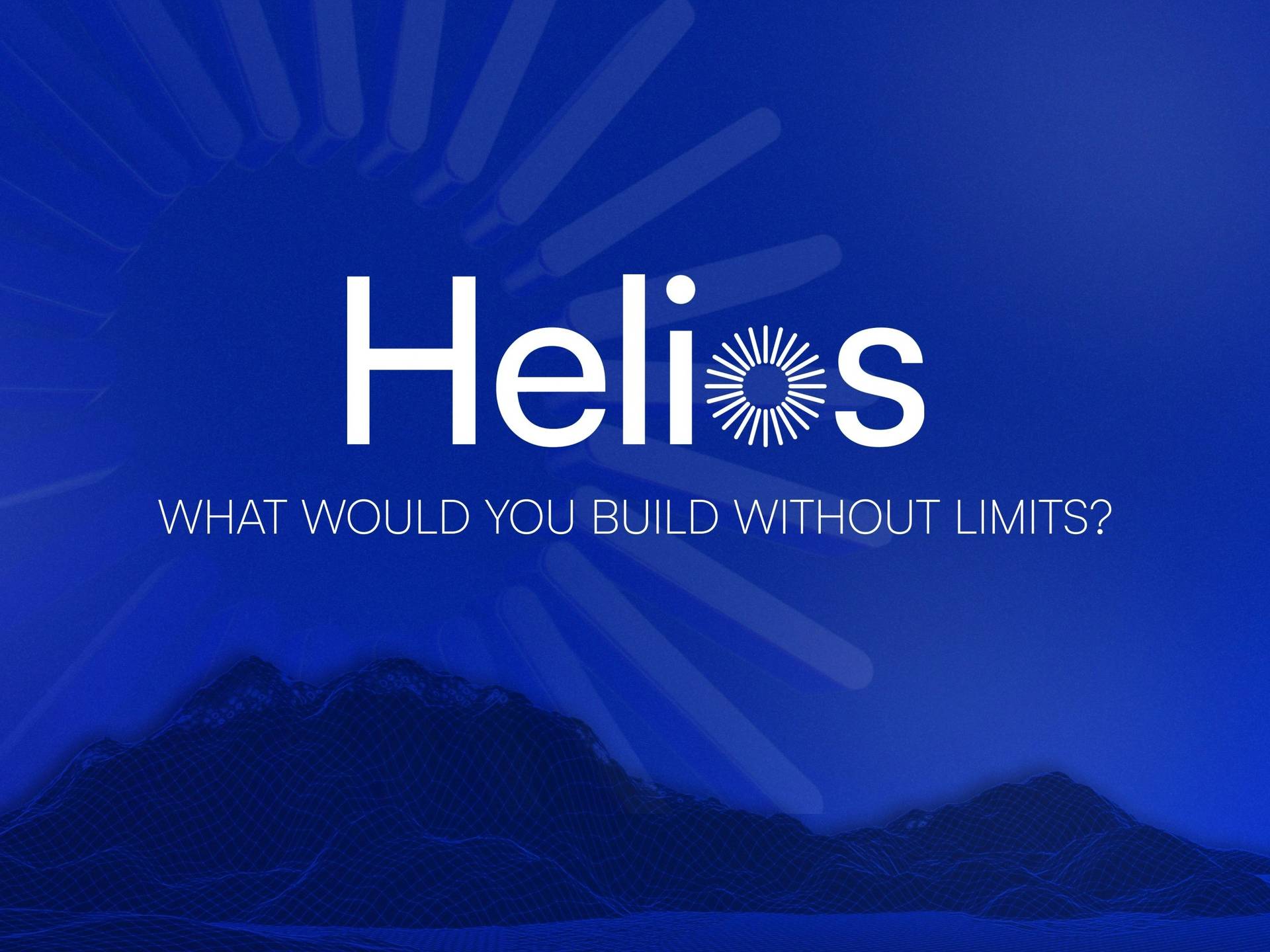위키 구독하기
Share wiki
Bookmark
Helios Blockchain
Helios Blockchain
**헬리오스(Helios)**는 크로스체인 상호운용성을 위해 설계된 모듈형 EVM 호환 레이어 1 블록체인입니다. 이 네트워크는 기존 브리지 없이도 서로 다른 블록체인 생태계의 자산, 스마트 계약 및 검증자가 원활하게 상호 작용할 수 있도록 목표로 합니다. [1] [2]
개요
헬리오스는 이더리움, 솔라나 및 코스모스 생태계 내 블록체인과 같은 서로 다른 블록체인 네트워크를 연결하는 기반 레이어로 개발되고 있습니다. 해당 아키텍처는 실행, 합의 및 데이터 가용성과 같은 핵심 블록체인 기능을 별개의 구성 요소로 분리하는 모듈형으로 구축되었습니다. 이러한 설계는 독립적인 확장, 특수 업데이트 및 더 큰 유연성을 허용하기 위한 것입니다. 이 프로젝트의 명시된 목표는 여러 체인에 걸쳐 스마트 계약 및 스테이킹 활동을 위한 안전한 조정 레이어 역할을 하는 것입니다. [1] [3]
이 네트워크는 검증자의 온체인 성과 이력과 경제적 지분을 통합하는 Interchain Proof of Stake & Reputation (I-PoSR)이라는 독점적 합의 메커니즘을 사용합니다. 이 시스템은 더욱 탄력적이고 실력주의적인 보안 모델을 만들도록 설계되었습니다. 헬리오스는 이더리움 가상 머신(EVM)과 코스모스 SDK를 기본적으로 지원하여 개발자가 친숙한 도구 세트를 사용하여 분산 애플리케이션(dApp)을 구축하고 배포하는 동시에 네트워크의 크로스체인 기능에 액세스할 수 있도록 합니다. 이 프로젝트는 헬리오스 재단에서 관리합니다. [4] [3]
아키텍처
헬리오스 아키텍처는 모듈성, 보안 및 크로스체인 통신을 용이하게 하도록 설계된 여러 핵심 구성 요소로 구성됩니다. [1]
모듈형 설계
헬리오스는 핵심 블록체인 작업이 분리된 모듈형 아키텍처를 사용합니다. 트랜잭션 실행, 합의 및 데이터 가용성과 같은 기능은 독립적인 계층으로 작동합니다. 이러한 분리는 각 구성 요소를 전체 네트워크에 영향을 미치지 않고 업그레이드하거나 확장할 수 있도록 하기 위한 것입니다. 이러한 기능을 격리함으로써 헬리오스는 개발자에게 특수화되고 효율적인 환경을 제공하고 크로스체인 상호 작용을 위한 조정 레이어 역할을 하려고 합니다. [1] [4]
Interchain Proof of Stake & Reputation (I-PoSR)
I-PoSR은 헬리오스에서 사용되는 합의 메커니즘으로, 지분 증명의 요소와 평판 기반 시스템을 결합합니다. 주로 스테이킹된 자본의 양에 의존하는 기존 PoS 모델과 달리 I-PoSR은 스테이킹된 자산과 과거 온체인 성과 모두를 기반으로 검증자를 평가합니다. 검증자는 여러 지원되는 블록체인에서 자산 위임을 수락할 수 있으며, 평판 점수는 보상과 선택 확률에 영향을 미칩니다. 악의적인 행위나 성능 저하는 검증자의 크로스체인 위임 자산 슬래싱으로 이어질 수 있으며, 이는 네트워크 보안과 안정성을 강화하기 위한 메커니즘입니다. [1] [3]
Hyperion 모듈
Hyperion은 헬리오스에서 크로스체인 상호운용성을 가능하게 하는 프레임워크입니다. 헬리오스를 외부 블록체인에 연결하여 안전한 데이터 및 자산 전송을 용이하게 하는 모듈형 확장 세트로 기능합니다. Hyperion은 분산형 오라클 및 리레이어 시스템으로 작동하여 헬리오스의 스마트 계약이 중앙 집중식 중개자나 신뢰할 수 있는 브리지에 의존하지 않고 이더리움이나 솔라나와 같은 다른 체인에서 데이터를 쿼리하고 작업을 트리거할 수 있도록 설계되었습니다. 이 시스템은 평판 기반 검증을 사용하는 독립 노드 네트워크를 사용하여 크로스체인 트랜잭션의 무결성을 보장합니다. 추가 블록체인을 지원하는 새로운 모듈은 네트워크 거버넌스 프로세스를 통해 추가할 수 있습니다. [1] [2]
Cronos 자동화
Cronos는 스마트 계약 기능의 예약된 실행을 허용하는 통합 온체인 자동화 도구입니다. 이 기능을 통해 개발자와 사용자는 외부 봇이나 키퍼가 필요 없이 블록체인에서 직접 자동화된 전략을 만들 수 있습니다. 잠재적인 애플리케이션에는 달러 평균 비용(DCA) 전략 설정, 온체인 포트폴리오 또는 인덱스 펀드의 자동 재조정 및 프로토콜 소유 유동성 관리가 포함됩니다. Cronos는 미리 정의된 일정 또는 서로 다른 체인의 외부 이벤트를 기반으로 스마트 계약 호출을 트리거하도록 설계되었습니다. [4]
토큰 경제
헬리오스 생태계는 네이티브 토큰인 HELIOS로 구동됩니다. 이 토큰은 네트워크의 스테이킹, 거버넌스 및 보상 메커니즘에 필수적입니다. [1]
토큰 유틸리티
HELIOS 토큰은 네트워크 내에서 여러 가지 기능을 합니다.
- 스테이킹 부스트: 검증자는 다른 체인에서 위임된 지분과 함께 HELIOS 토큰을 잠금 해제하여 잠재적인 연간 수익률(APY)을 높일 수 있습니다. 이 "HELIOS 부스트"는 검증자가 네트워크의 네이티브 자산에 직접적인 경제적 지분을 보유하도록 유도하기 위해 설계되었습니다.
- 거버넌스: HELIOS 토큰 보유자는 검증자와 함께 온체인 거버넌스에 참여할 수 있습니다. 투표권은 체인 간 지분과 검증자 평판의 조합으로 결정됩니다.
- 네트워크 보안: 이 토큰은 스테이킹 및 슬래싱 메커니즘을 통해 네트워크의 경제적 보안에 기여합니다. [1]
잘못된 내용이 있나요?
